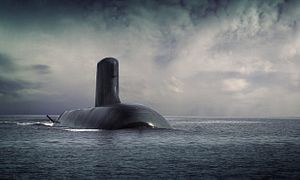On Tuesday, Australian Prime Minister Malcolm Turnbull announced that France had secured a $50 billion contract to build Australia’s new submarine fleet, confirming weeks of speculation that Japan had lost out in the three-way competitive evaluation. While the outcome is definitely a missed strategic opportunity to enhance Australia-Japan defense ties, an overemphasis on it also risks missing the broader story of a burgeoning bilateral security relationship between the two sides that will continue to endure in spite of this hiccup.
Designing, building, and sustaining a new submarine fleet is a costly and complex affair, so it is no surprise that a whole range of considerations factored into Australia’s decision, including cost, design, capability, and even domestic politics. That said, it would be foolish to pretend that the biggest defense acquisition in Australian history was entirely a technical and domestic decision given its obvious strategic and international implications, particularly for Canberra’s relations with Tokyo. After all, Turnbull’s predecessor Tony Abbott has called Japan Australia’s “closest friend in Asia.”
Had Japan won the bid and participated in Australia’s Future Submarine Program (SEA 1000), it would have further energized the growing strategic convergence between Tokyo and Canberra. Though that convergence is rooted in broader shared interests than one narrow commercial deal, the contract would nonetheless have served as a significant, long-term defense project to further bind both sides to each other. The effort to replace the Royal Australian Navy’s (RAN) Collins-class submarines is a decades-long process that will last into the 2030s, and Japan’s role in it would have been its first deep dive into the international defense market, building on a series of moves Abe has taken domestically to make that possible, including overturning a decades-old ban on arms exports.
That is not all. Had the bid gone to Japan, it would also have catalyzed ties between these two key U.S. treaty allies and Washington as well, with broader implications for the Asia-Pacific more generally. Beyond injecting more momentum into growing U.S.-Japan-Australia trilateral cooperation, it would have more specifically opened up the possibility of all three governments working on a defense project together, deepening submarine cooperation and integrating their anti-submarine warfare capabilities in the face of growing maritime security challenges. Growing U.S.-Japan-Australia maritime cooperation would also help these three partners realize common interests in the Asia-Pacific that would benefit the region more generally, including preserving freedom of navigation.
That said, this ‘lost opportunity’ also needs to be put into perspective in terms of the breadth and depth of Australia-Japan defense ties, especially as the two sides seek to move on following this setback. In terms of depth, while ties were especially warm under Abe and Abbott, Australia-Japan security relations have been on the uptick since the 1990s and into the 2000s, and especially in the last decade. A joint security declaration in 2007 was followed by a string of more specific agreements covering acquisition and cross-servicing in 2010 as well as information security in 2012 before the oft-cited one on the transfer of defense equipment and technology in 2014. This growing convergence is not the product of a single transaction or a pair of leaders, but converging interests – which include but are not limited to a shared concern about a rising China – as well as shared values including democracy, the rule of law, and free markets.
Breadth-wise, defense industry cooperation is only one component of a burgeoning security relationship. If one looks at Australia-Japan defense ties more generally, the trajectory over just the last few years alone is quite impressive, both between the two countries as well as with other actors, principally the United States. In the area of exercises, for instance, they have become much more frequent and complex in recent years, with several notable firsts, including Japan’s participation in the U.S.-Australia exercise Talisman Sabre for the first time last November. And while the entry of a Japanese Soryu-class submarine into Sydney Harbor earlier this month for the first time since World War II as part of naval exercises with the RAN was marred by leaks suggesting Tokyo had already lost the bid, it is also true that this is a significant development on its own apart from the deal itself.
To say this is not to deny the fact that Australia and Japan will have to work hard to both limit the damage from the submarine decision as well as to restore momentum to their bilateral relationship. Following the outcome, Abbott issued a carefully calibrated statement saying that Canberra’s special relationship with Tokyo “is more than strong enough to withstand this disappointment” and that the partnership would “continue to grow through other means.” While he is right in theory, both governments now need to work hard to translate this into practice and demonstrate that their partnership is much deeper than a sunken submarine bid.

































